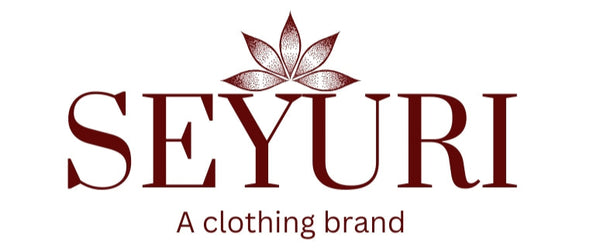
A comprehensive look at Indian clothing fashion
Share
Hindustan, India, and Bharat! Deeply ingrained in its foundations are all the characteristics of a great nation rich in culture and variety. Because of this, when you think about India, you probably picture the Taj Mahal, regal palaces, historical sites, and an endless array of different cuisines. Of course, our favorite thing about India is the stunning, vibrant, and incredibly royal-looking traditional Indian clothing.
There is no doubting that the rustic architecture of several nearby ancient landmarks serves as a major source of inspiration for Indian ethnic design. This has left a mark on the Indian ethnic fashion business to this day. Intricate hand embroidery, bold patterns and designs, luxurious materials like cotton and Banarasi silk, and the use of vivid and striking hues are all features of the Indian subcontinent's superb ethnic dress. This is the main cause of the global popularity of Indian traditional clothing, particularly for opulent weddings and ceremonial festivities.
In order to stay up with contemporary fashion trends, Indian ethnic clothing has seen significant change over the years. But even as it changed to accommodate the younger generations, it was still able to preserve our royal heritage and traditional traditions.
Like Indian customs, the history of the fashion business in India is as old as time itself. We regrettably did a poor job of keeping industry data, so we are not really aware of the timeline of the many ethnic trends that came and went. Thanks to designers like Satya Paul and Rohit Khosla, the Indian ethnic fashion sector saw its first notable upswing in the 1980s. The Indian economy was then liberalized in 1990, which led to yet another enormous expansion in the country's fashion sector. From this point on, it was all fusion, and the fashion industry as a whole expanded rapidly throughout India.
As a result, the international fashion community is now giving Indian fashion the much-needed and long-awaited attention it deserves. With their selection of colors, textiles, patterns, and designs, as well as their ethnic style, the gifted Indian fashion designers are making waves. Men and many women use this to make daring fashion statements at engagements, weddings, festivals, and other events.
Regarding ladies making daring fashion statements, the most recent Indian fashion trends include some iconic traditional clothing for women, such as salwar kameez, traditional sarees, and magnificent lehengas.

Let's examine some of the leading candidates who are dominating the Indian ethnic fashion scene in more depth.
The traditional Indian saree is the ultimate nine yards of affection.
What can be said about the Indian saree that hasn't previously been worn by thousands of strong women who wear it every day? But since we are discussing the fundamentals, let's get started.
The saree is usually 5 to 9 yards long and is made of a straight cut fabric. Sarees come in literally hundreds of styles, each of which is unique to a distinct part of the Indian subcontinent. A traditional Indian saree is most commonly draped or worn around the waist with folding pleats tucked within the petticoat's border (around the navel), which is usually worn underneath the saree.
You will be astounded by the sheer number of varieties and variations of the Indian saree. Versions of traditional sarees, half-and-half sarees, printed sarees with their own devoted fan base, lehenga sarees, and more are examples of different saree types. In addition, every Indian area has its own unique style for draping sarees, such as the Bengali, Maharashtrian, Gujarati, and many more traditions. The wonderful thing about sarees is that they allow you to look like the epitome of feminine beauty wherever you wear them! They are ideal for everyday, office, and casual wear. Of course, you may also wear party wear sarees to important events like festivals and business parties. And who can forget the timeless beauty of a bride wearing a classic red bridal saree?
One that brings happiness: the gorgeous Salwar Kameez
The Anarkali suit, a well-known style of salwar kameez, gained popularity among the populace after its namesake, Anarkali, wore it in the Mughal royal court. According to history books, the traditional salwar kameez originated in Northern Punjab, India. The salwar kameez is made up of a scarf called the dupatta, a top called the kurti or kameez, and a bottom called the salwar, which is usually loose. Similar to the saree, there are many distinct designs, styles, and patterns for salwar kameez. Punjabi suits, also called Patiala suits, straight-cut Pakistani suits, palazzo suits, pantsuit suits that pair with straight-cut salwars, and abaya-style dresses are some of the most well-known varieties of salwar suits.
The most well-known item in this collection is the Anarkali, which is typically saved for important events like weddings and festivities. It features a straight-cut salwar, dupatta, and a long, ankle-length A-line kurta. On the other end of the spectrum is the Punjabi clothing, which originated in Punjab and features a loose-fitting salwar and a shorter kameez. Depending on how you chose them and the event, salwar kameez can also be worn to special events, college lectures, and informal workdays.

The slayer of hearts- Lehenga Choli
One of the most well-liked and elegant outfits offered by the Indian fashion business is the lehenga choli, which was invented by innumerable Bollywood celebrities. The lehenga, sometimes called Ghaghra choli, is made up of a dupatta, a flared skirt-like bottom called a lehenga, and a crop top called a choli. In contrast to the saree and the salwar kameez, lehenga choli is only worn for special events like weddings and parties and is not a staple of contemporary Indian women's wardrobe.
How did everyone feel about this in-depth analysis of the Indian ethnic fashion scene? Do you believe that the ethnic fashion sector has peaked and that the future will be just repeats, or do you think we are about to see another fashion boom? Tell us in the comments section.
